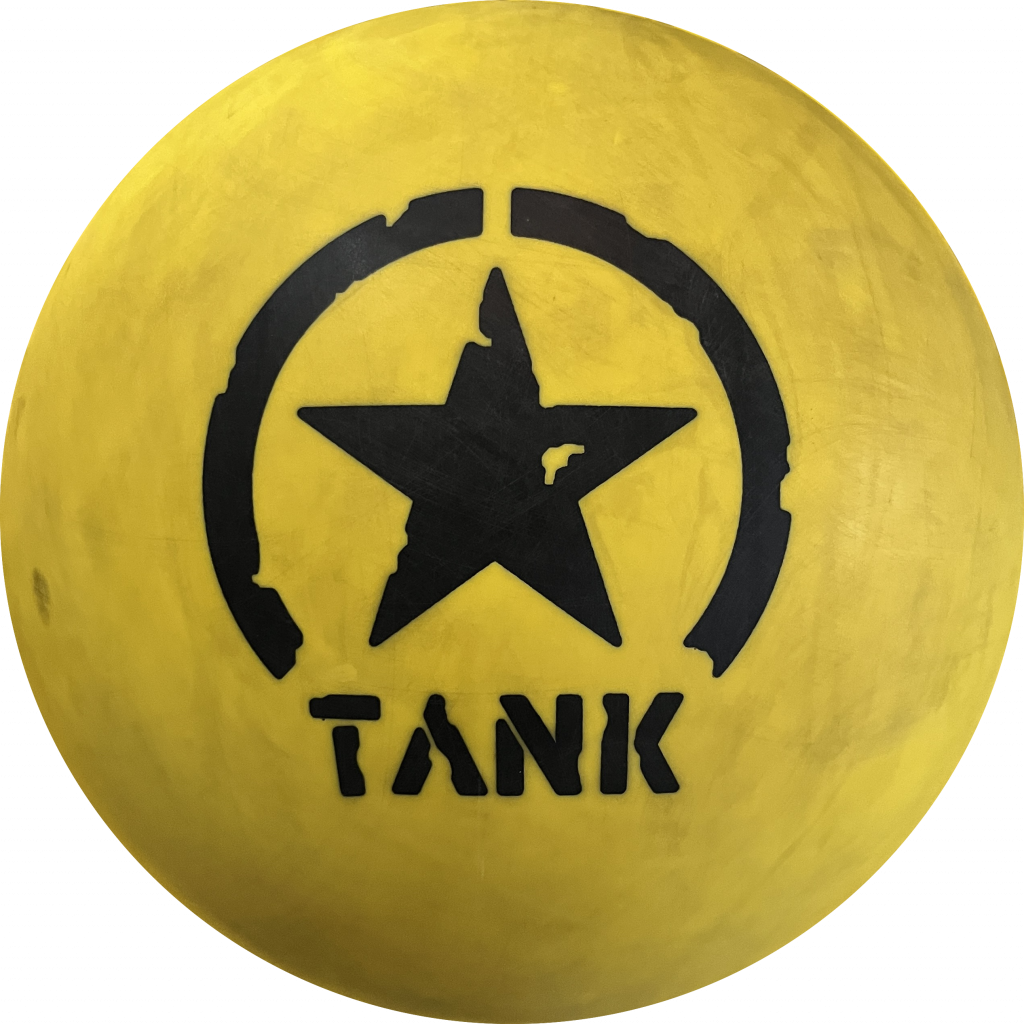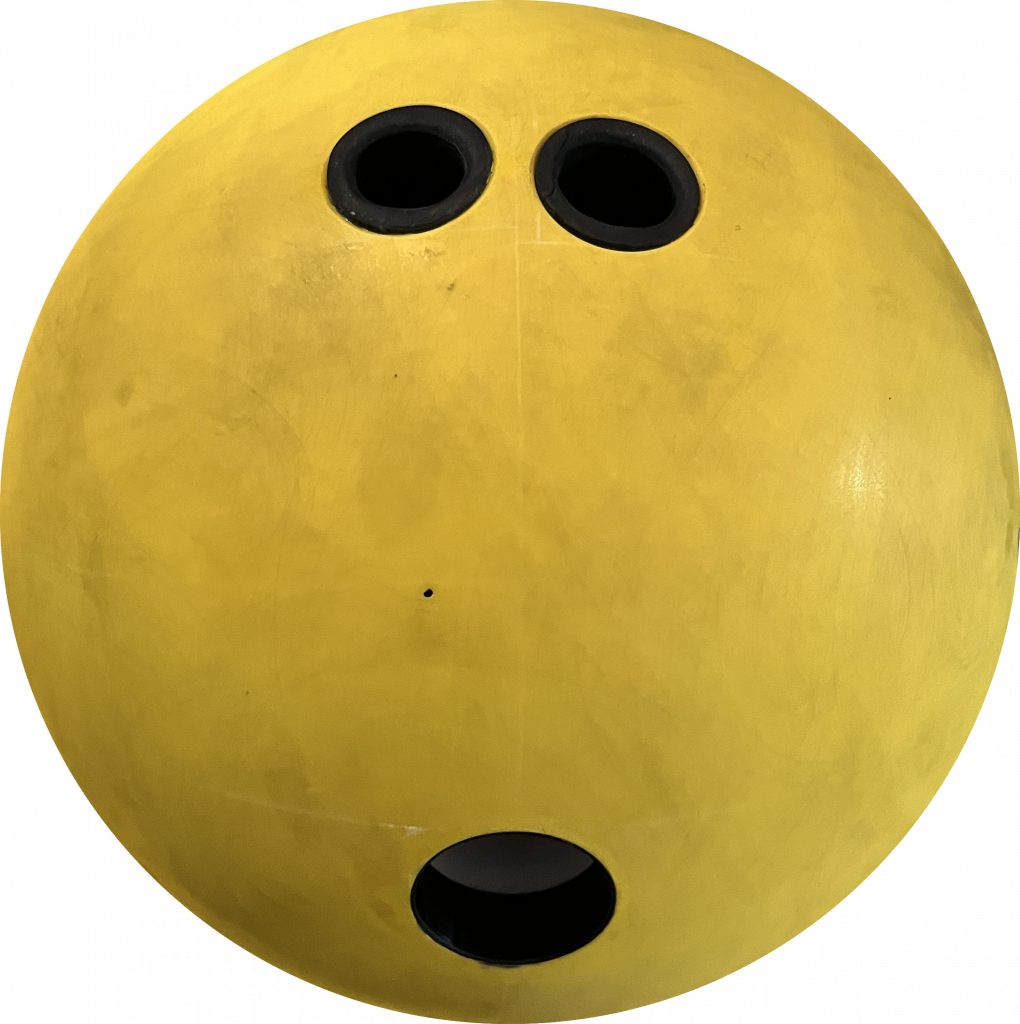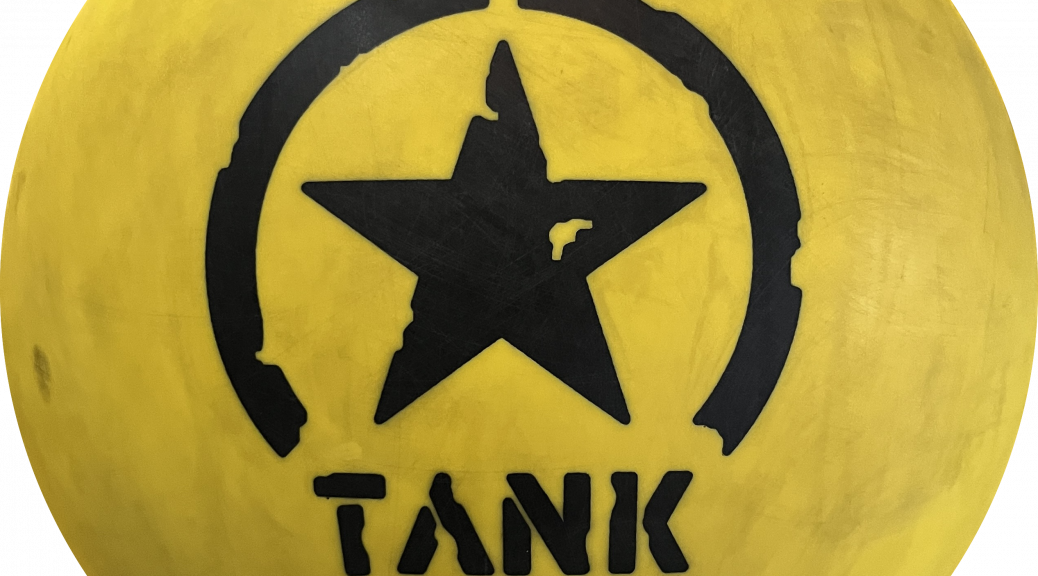


First Impressions
This thing is bright. Super early, feels like strong urethane.
Check out our friends Jeff Miller and Ron Hoppe at Haley’s Pro Shop for world class drilling and coaching!
Tamer Elbaga (Lefty)
Style: Tweener
RPM: 330 rpm
PAP: 5 & 3/8 up
Average Speed: 18.5 mph (at release)
Axis tilt: low
Axis rotation: medium/high
Test Equipment: 14 Pounds
Layout: 50 x 5 x 45
Bryan Hoffman (Righty)
Style: Stroker
RPM: 280 rpm
PAP: 4 1/2 & 1 1/2 up
Average Speed: 18.5 mph (at release)
Axis tilt: high
Axis rotation: medium
Test Equipment: 14 Pounds
Layout: 50 x 5 x 45
Tyler Church (Righty)
Style: Power Player
RPM: 450 rpm
PAP: 5 1/2 & 1/2 up
Average Speed: 19 mph (at release)
Axis tilt: med
Axis rotation: medium
Test Equipment: 14 Pounds
Layout: 50 x 5 x 45
“Keep in mind that coverstock accounts for 70% of ball reaction, but the core creates the dynamic shape of the reaction. Your driller will alter the shape to suit your game.”
Pattern
THS: 42ft, 23ml
Sport: TBD
Specs
The Motiv Tank Yellowjacket uses the Flux™ Symmetric core inside the Frixion M5 Microcell Polymer coverstock.
15 pound = RG of 2.57, diff of .015
14 pound = RG of 2.57, diff of .018
Coverstock finish: 1000 grit LSS
Overall
Let’s get into this a bit. Motiv releases another Microcell Polymer ball which essentially is their version of urethane. While other brands work up urethane and urethane like covers, this is Motiv’s version of it. Just a quick refresher, MCP basically absorbs a bit more oil than urethane but significantly less than reactive. Ultimately, the effect is still mostly pulling oil from the front of the lane and pushing it downlane, especially since most of the cores in these balls have minimal flare. The Flux core is a very low diff core so all control. It allows the cover to dominate. This version known as the Frixion M5 feels like a pretty strong version but with a pretty traditional early urethane like look. So it kind of slots itself below the Carbide Tank and stronger than the Blue Tank. Both Blue and Carbide feel “cleaner” in other words get a little further downlane than the YellowJacket. However, the Carbide has more punch downlane, kind of splitting the difference between urethane and reactive while the Blue is has less backend than either. It’s almost like the Blue is a mild urethane, Yellowjacket is a strong urethane, and Carbide would be somewhere much closer to reactive. In fact, the Yellowjacket and Carbide didn’t have much board coverage difference but vastly different ball reactions. It was very easy for Tyler to find a very good look to the pocket. Excellent control motion. About half a game in, he started to see the flat 10. Again, this is a consequence of the pattern changing and possibly happens a little quicker here because of the significant midlane friction this house and pattern has.
Bryan is up next. Urethane like reaction wouldn’t typically be his forte but the Yellowjacket acquitted itself fairly nicely overall. You can see the first couple of balls have that typical hook at your feet reaction. Figured we’d show you that for ha-has. The Yellowjacket has a very early read so he was inside the second arrow but also being inside the friction line on the house pattern meant very little backend. Initially it felt like he might have to pipe it. MCP or urethane doesn’t typically yield confidence opening the angles. But seeing the ball reaction as it was, we started experimenting, pushing the ball out to the friction from the same point at the arrows. So instead of 12 to 10, he would get eventually to 12 or 11 to 7 and the Motiv Yellowjacket really came alive. It surprised with the right amount of early move and backend to look quite good from there. It’s still a little niche for Bryan but this is one of the better looks for him in terms of urethane-like ball motion.
Final Thoughts
It’s clear urethane and Microcell Polymer are here to stay for a while. Motiv continues to bring variations in ball reaction in this control motion space. The Yellowjacket has a fairly traditional urethane-like look but just a step up in strength everywhere. It’s still banana shape. No I didn’t say that because it’s yellow. But it does slot a bit uniquely in a bag in the sense that if you are carrying say a Carbide which I think is strong enough to fit in the legit strong control slot, the Yellowjacket has similar strength up front but is smoother downlane. So boiling it down to just a urethane bag, the Carbide would actually be the strong angular type shape with the Yellowjacket being the strong smooth type shape.
Hope that helps, thanks for watching.
Here’s my personal take now that I’ve had a chance to test the Motiv Yellowjacket Tank after some recovery from a bicep tear. I can confirm the same feedback from the initial review. This essentially feels like a strong urethane type ball. Very early read as you expect and that long walk to the pocket. There are 2 options with the Yellowjacket I found. The easiest way for me to play it was to the left and allowing it to start early, then watch it take that long walk to a heavy run through the pins. The other option is moving in a bit and opening up the angles. While it was strong enough to return to the pocket, I definitely struggled with carry with my lower rev rate. It felt like a pocket magnet I have to say, but the outside play was a clear winner here. You can see why I call it a stronger urethane given the ability to actually cover a bit of left to right motion, but for a bowler of my style, straighter is greater when it comes to urethane or microcell polymer. I did feel like I have to throw it a bit harder to push it downlane but maybe it’s my perception when I climb on top of the friction with a dusty ball to boot. Ultimately, I actually enjoyed the look but I do always have some concern about how the pattern breaks down and the resulting transition.
Thanks for watching.

